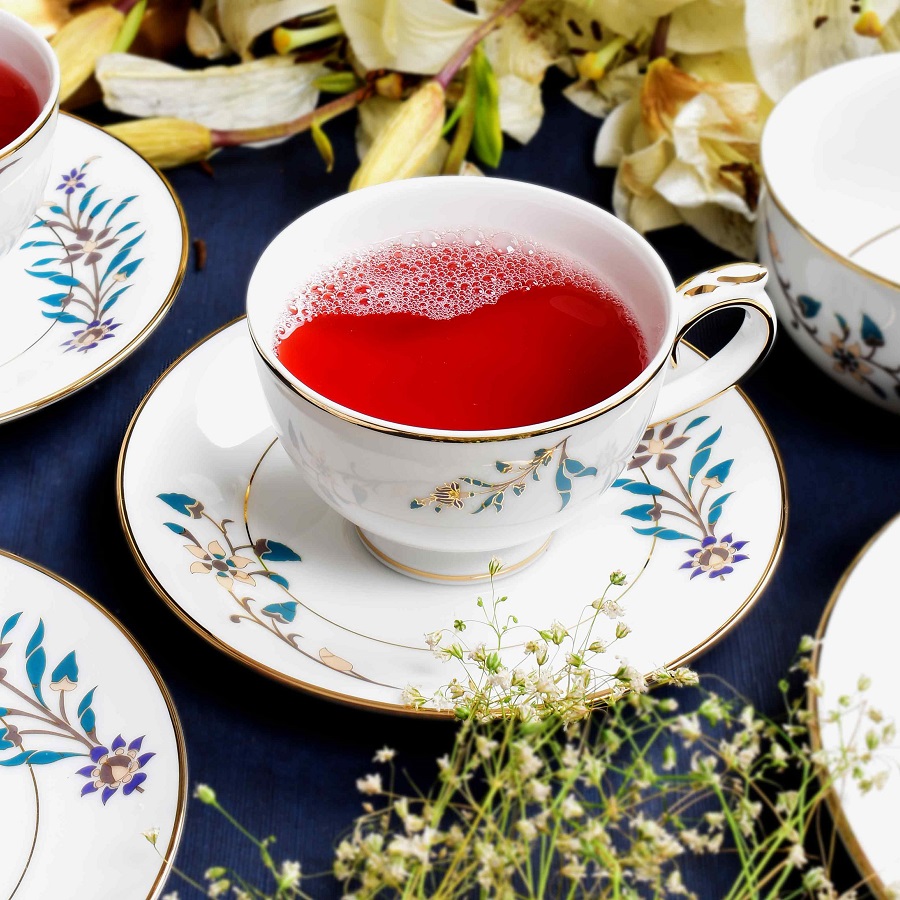Tea is not just a drink; it’s a ritual, a sensory experience, and for many, an art form. The right cup can elevate the simple act of drinking tea into a meditative and enjoyable experience. In this article, we will explore how to choose the perfect tea cup for every type of brew, delving into the factors that influence the choice of tea cup and the ways in which different materials, shapes, and sizes enhance the tea-drinking experience.
The Importance of the Right Tea Cup
Understanding the Role of the Tea Cup in the Tea Experience
When it comes to tea, the vessel in which it is served plays a pivotal role in influencing its flavor, aroma, and overall enjoyment. The choice of a tea cup can be as important as selecting the right tea leaves. The right cup can maintain the ideal temperature, preserve the delicate aromas, and enhance the flavor profile of the tea. On the other hand, a poor choice of cup can detract from these qualities.
Tea is an inherently sensory experience. Its color, aroma, taste, and even texture contribute to the full enjoyment of the brew. The vessel serves to preserve these elements. For example, the shape of a cup can affect how the tea’s aroma is concentrated and how it interacts with your sense of taste. A well-chosen cup can allow you to appreciate all the nuanced flavors of the tea. Therefore, understanding the unique characteristics of different cups can help you choose the right one for each type of tea.
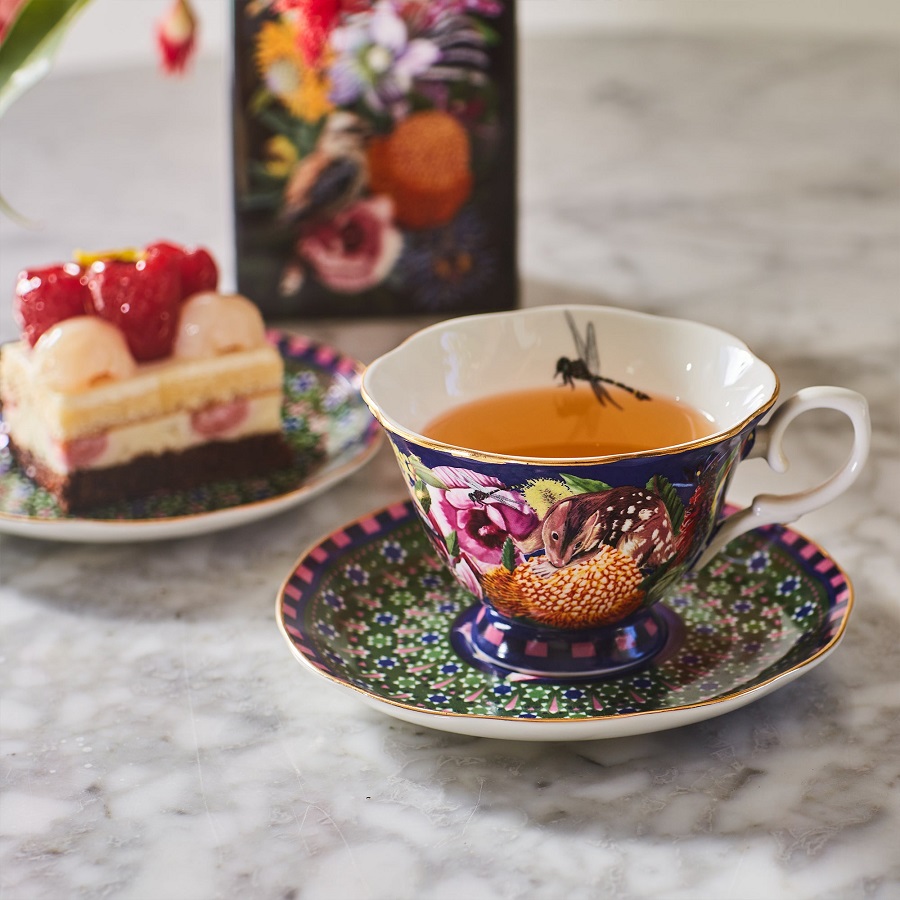
Types of Tea and Their Ideal Tea Cups
Matching the Right Tea Cup to Different Tea Varieties
Different types of tea—whether green, black, oolong, or herbal—require different types of tea cups. Each tea has its own brewing needs, and these needs can be further optimized by using the right cup. Let’s break down how the most common types of tea benefit from specific cups.
Green Tea
Green tea is delicate and subtle, often brewed at lower temperatures to preserve its fresh and grassy flavors. A smaller cup, typically made of porcelain or thin ceramic, is ideal for this type of tea. These materials do not retain too much heat, which helps keep the tea at a lower temperature for longer. The thin walls also allow you to better appreciate the delicate aroma of the tea as it is inhaled through the narrow rim of the cup.
Black Tea
Black tea, with its robust and bold flavors, requires a cup that can handle its strong, often tannin-rich qualities. A more substantial, heavier cup made from ceramic or clay is ideal. These materials retain heat better, ensuring that the tea stays at a consistent, optimal temperature as you sip. Additionally, larger cups allow for the complex layers of flavor to develop, making the drinking experience more rewarding.
Oolong Tea
Oolong tea, which lies between green and black tea in terms of oxidation, benefits from a versatile cup that can accommodate both delicate and rich flavors. The best choice is a cup made of porcelain or stoneware with a wide, shallow bowl. The wide rim allows the tea to cool slightly faster, enabling you to appreciate the nuances of its aroma while maintaining enough heat to fully experience its complex flavor.
Herbal Tea
Herbal teas, often made from flowers, herbs, or fruits, can be quite aromatic and rich in flavor. A clear glass cup is often the best choice for herbal teas. The transparency of the glass allows you to appreciate the color of the brew, which can be an important visual element of the herbal infusion. Glass cups also do not impart any unwanted flavors to the tea, allowing the natural taste of the herbs or fruits to come through.

The Material of the Tea Cup: How it Affects Taste and Aroma
The Influence of Different Materials on Tea
The material of your tea cup is perhaps the most important factor in determining how the tea will taste and smell. Different materials retain heat and interact with the tea in unique ways, affecting the overall drinking experience. Let’s explore some of the most common materials used to make tea cups and their impact on the tea.
Porcelain
Porcelain is one of the most common materials used for tea cups, especially for green tea. They do not retain heat for long periods, making them ideal for serving delicate teas that require lower brewing temperatures. The non-porous surface of porcelain ensures that the flavor of the tea is not altered by the material. This allows the natural taste of the tea to shine through. Additionally, the glossy finish of porcelain enhances the aroma of the tea, which adds to the overall sensory experience.
Ceramic
Porcelain cups and are great for serving black teas and other hearty brews. Ceramic helps maintain the temperature of the tea as you sip. Some ceramic cups are glazed, while others have a more rustic, unglazed finish. The unglazed ceramic can sometimes impart subtle earthy flavors to the tea, which enhances the experience for those who enjoy a more robust cup.
Glass
Glass tea cups are ideal for herbal teas or delicate blends because they allow you to observe the tea as it brews. The clarity of glass is visually appealing, especially when the tea is rich in color. Glass is also neutral in taste, meaning it won’t affect the flavor of the tea. However, glass cups do not retain heat as well as ceramic or porcelain, so it’s important to drink the tea relatively quickly to enjoy it at the optimal temperature.
Clay
Clay cups, particularly those made from Yixing clay, are known for their ability to retain heat and enhance the flavors of tea. These cups are often used for oolong or puerh teas, which can benefit from the heat retention properties of clay. Over time, a clay cup can also become seasoned with the flavors of the tea, adding a unique character to each brew. However, clay cups require special care and are often used exclusively for one type of tea to avoid flavor contamination.
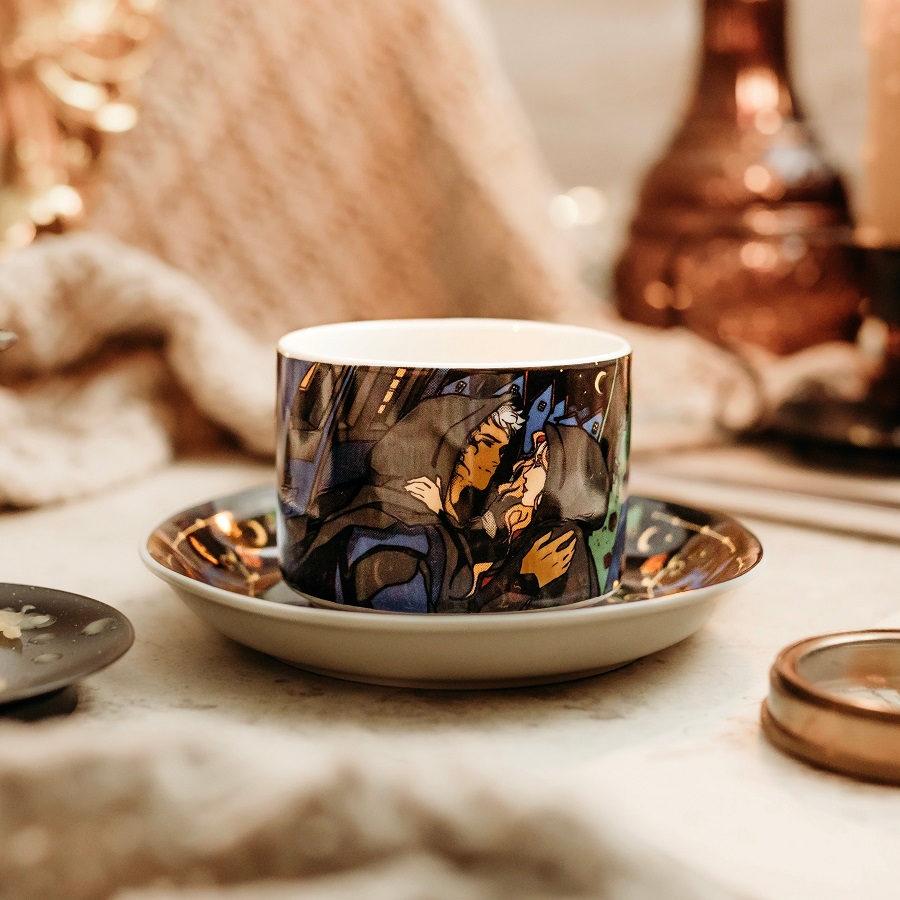
The Shape and Size of the Tea Cup
Why Cup Shape Matters for Different Teas
The shape of the tea cup can influence how the tea is experienced, particularly when it comes to aroma and flavor. The size and shape of the cup’s rim, as well as its overall design, can impact how the tea interacts with your senses.
Narrow Rim vs. Wide Rim
A narrow-rimmed cup, often used for green or white teas, concentrates the tea’s aroma, allowing you to experience its fragrance more intensely. The narrower opening helps to trap the delicate aromas within the cup, enhancing the overall drinking experience. In contrast, a wider-rimmed cup allows the tea to cool more quickly, which is useful for teas that require slightly lower temperatures, like oolong or black tea. The wider rim allows you to take in the full spectrum of flavors while also giving you the space to appreciate the tea’s color and aroma.
Deep vs. Shallow Cups
Deep cups are typically reserved for teas that benefit from longer brewing times, like oolong or puerh teas. These cups allow the tea to steep for longer and retain the heat, ensuring that the complex flavors can develop fully. Shallow cups, on the other hand, are often used for delicate teas such as white or green tea. The shallowness of the cup allows the tea to cool quickly, which can prevent it from becoming overly bitter or astringent.
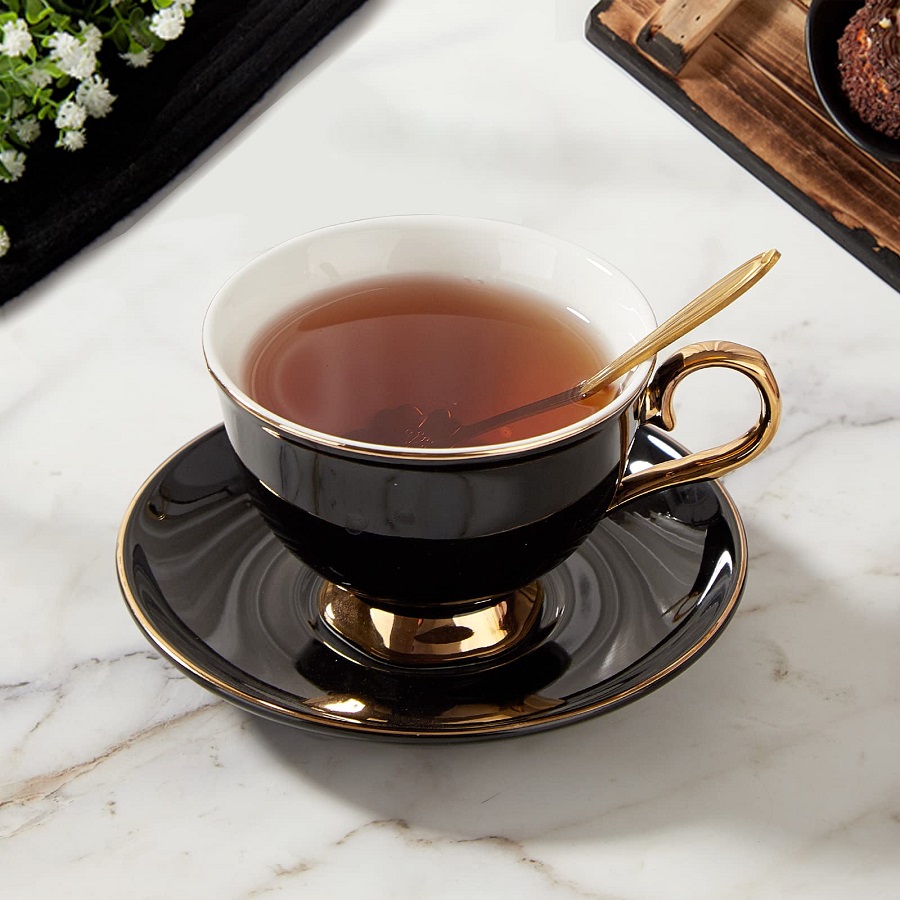
The Aesthetics of the Tea Cup
How the Look of the Cup Enhances the Tea Experience
The visual appeal of a tea cup adds a layer of pleasure to the tea-drinking experience. Whether it’s the intricate designs on a porcelain cup or the rustic charm of a hand-thrown ceramic mug, the aesthetics of a tea cup can contribute to the ambiance and personal enjoyment of the brew. The act of drinking tea is as much about appreciating beauty as it is about enjoying flavor.
Traditional vs. Modern Designs
Traditional tea cups, such as those used in Chinese tea ceremonies or Japanese tea culture, often feature intricate designs and a sense of craftsmanship that makes the experience feel special. These cups are often made from fine porcelain or clay and are typically used for specific types of tea. On the other hand, modern tea cups may emphasize sleek, minimalist designs that reflect contemporary trends. These cups can still be functional while serving as a beautiful accessory to your tea ritual.
Personal Connection to Your Tea Cup
Choosing a tea cup that resonates with you on a personal level can make your tea-drinking experience even more enjoyable. Whether it’s a cup that reminds you of a favorite place, a cherished memory, or simply a design that you find beautiful, the personal connection you have with your tea cup can elevate the entire experience. This emotional connection enhances your overall enjoyment of tea, making each sip feel like a moment of personal indulgence.
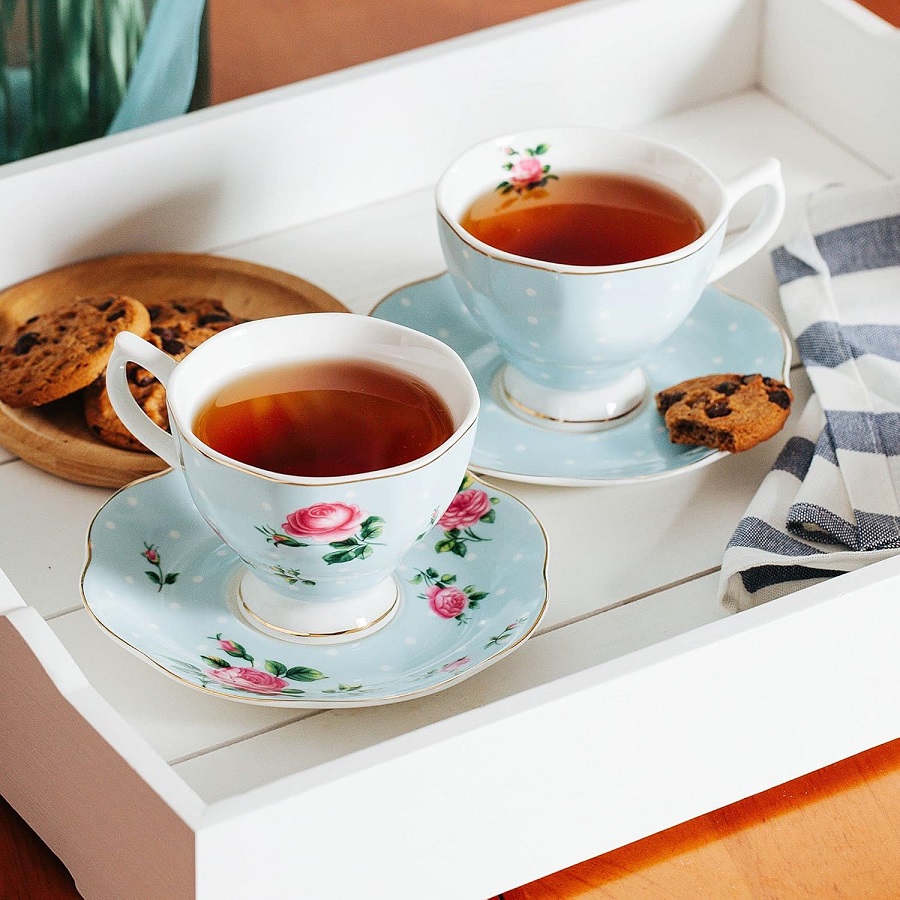
Conclusion: Choosing the Perfect Tea Cup
Bringing It All Together: Find the Right Cup for Your Tea
Choosing the perfect tea cup is not just about functionality; it’s about enhancing the sensory experience of drinking tea. From the material of the cup to its shape, size, and aesthetic qualities, every element plays a role in how you experience your tea. The right cup can elevate a simple cup of tea into an artful ritual, helping you appreciate the subtle nuances of your brew.
In the end, the perfect tea cup for every brew comes down to personal preference and understanding the unique qualities of each type of tea. Whether you’re enjoying a delicate green tea, a robust black tea, or a fragrant herbal infusion, there is a tea cup that will enhance the experience. By experimenting with different cups and paying attention to how they affect your tea, you can discover the best combination that brings out the full potential of your favorite brews.
